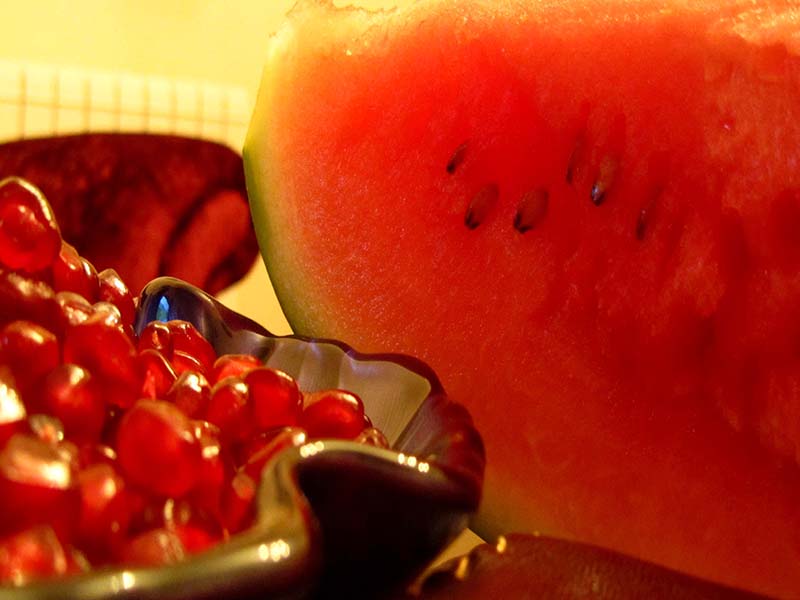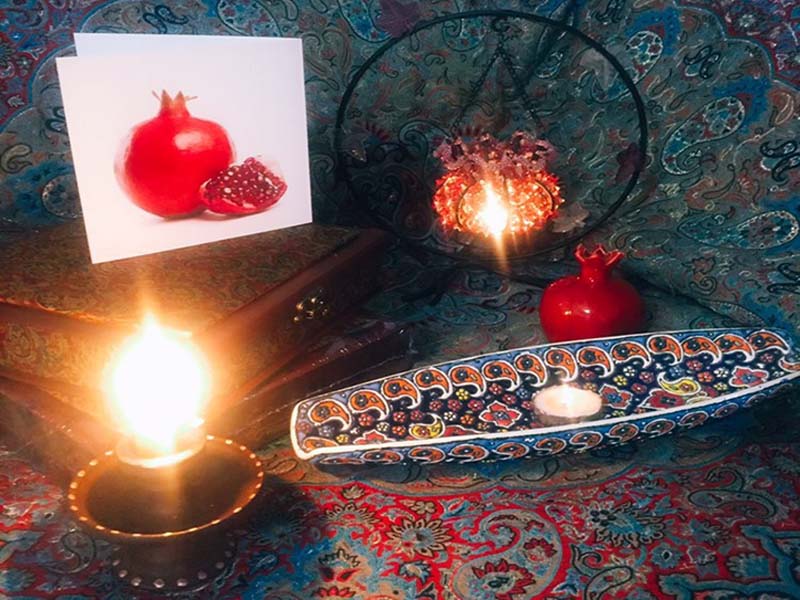
Yalda night is the celebration of the birth of the new sun. Yalda is the last night of autumn, and the longest and darkest night of the year. It’s an ancient Zoroastrian tradition celebrated all across Iran and central Asian countries such as Afghanistan, Tajikistan, Uzbekistan, Turkmenistan and some Caucasian states such as Azerbaijan and Armenia.

On the eve of the first day of winter in the northern hemisphere, the winter solstice occurs sometime between December 21 and 22, and during this time a historical celebration takes place in Iran. It is generally called Yalda, or Shab-e-Chelle, for ‘chelle’ means 40, and Yalda celebration takes place 40 days prior to the Zoroastrian fire festival of Sadeh.
In the Zoroastrian era, people were advised to stay awake for most of the night, to prevent any bad luck from happening. They had to gather in the safety of groups with friends and family, especially grandparents or the oldest person in their relatives. They shared the last remaining fruits from the summer, and found ways to pass the long night together in good company.
This culture has not changed today. On this night people still gather around their loved ones. They eat, drink, read poetry (Hafez) and pass this long dark night with laughter and joy in the company of their loved ones. Iranians believe those who begin winter by eating summer fruits, would not fall ill during the cold season. Therefore, eating watermelons is one of the most important traditions in this night. Pomegranates are reminders of the cycle of life–the rebirth and revival of generations. The purple outer covering of a pomegranate symbolizes birth or dawn, and their bright red seeds the glow of life.
One of the other traditions of Yalda night, which has been added in recent centuries, is the recitation of the classic poetry of Hafez, the Iranian poet of 14th century AD. Each member of the family makes a wish and randomly opens the book and asks the eldest member of the family to read it aloud. What is expressed in that poem is believed to be the interpretation of the wish and whether and how it will come true. This is called Faal-e Hafez (Hafez Omen).

Today, Christmas is celebrated slightly off from Yalda Night. However, Christmas and Yalda are both celebrated in a similar fashion by staying up all night and celebrating it with friends and family, and eating special foods.
In most ancient cultures, including Persia, the start of the solar year has been marked with the celebration of the victory of light over darkness, and the renewal of the sun. According to the UNESCO website, Yalda ceremonies, in the best way, point to cultural diversity and human creativity, especially when one considers the wide range of the communities that celebrate it.

